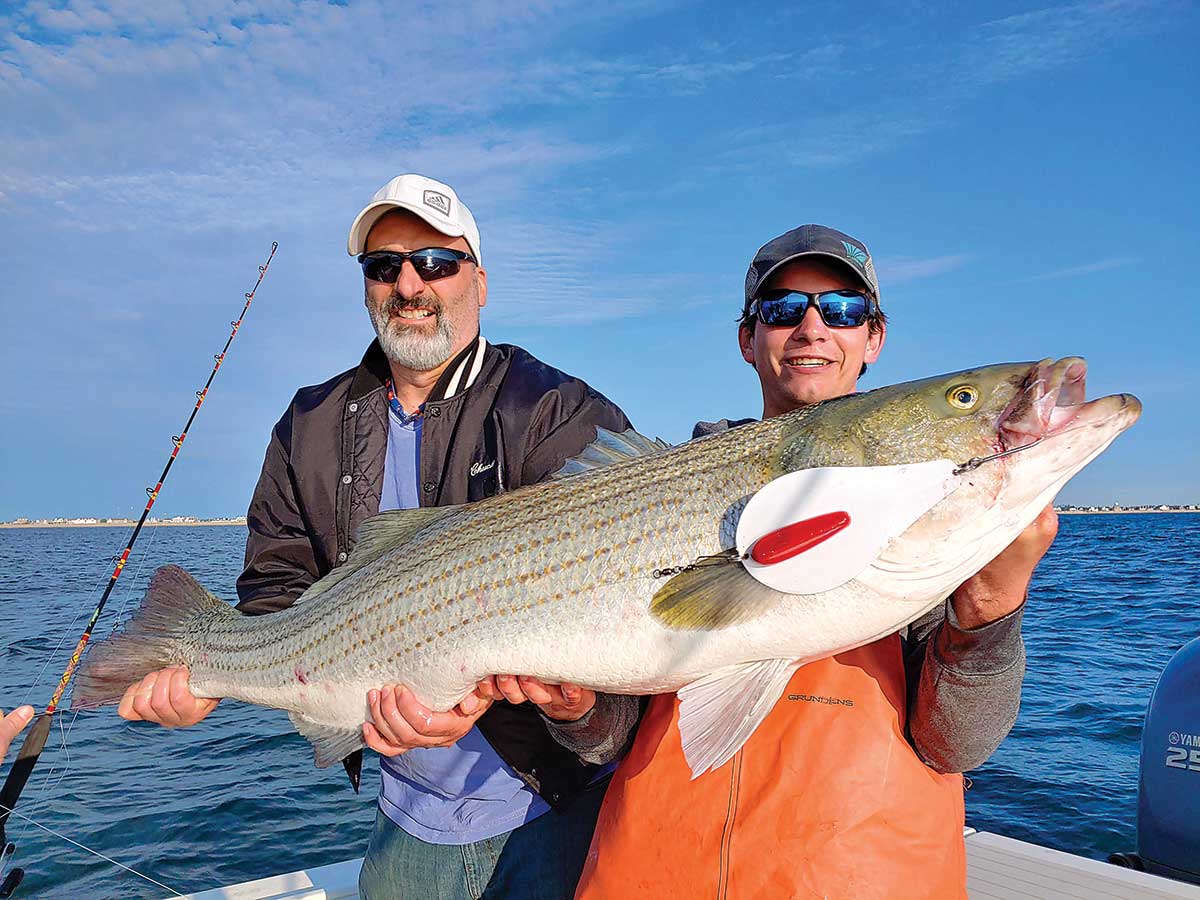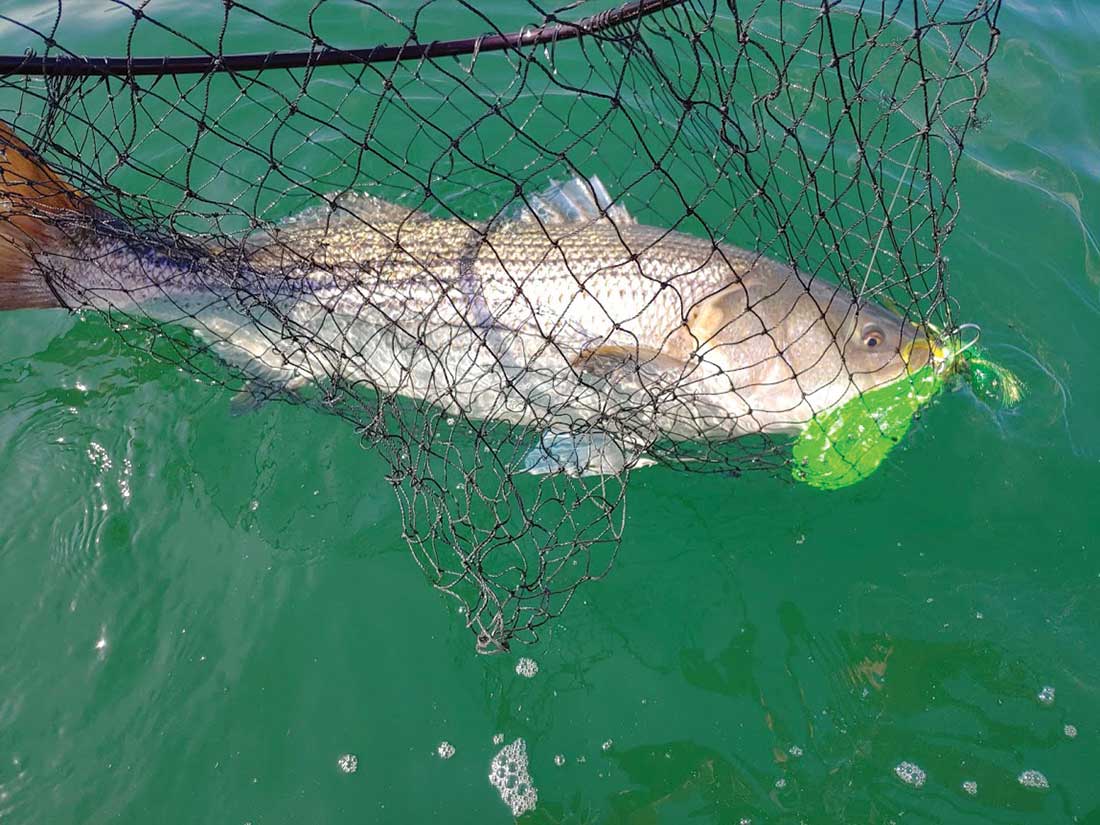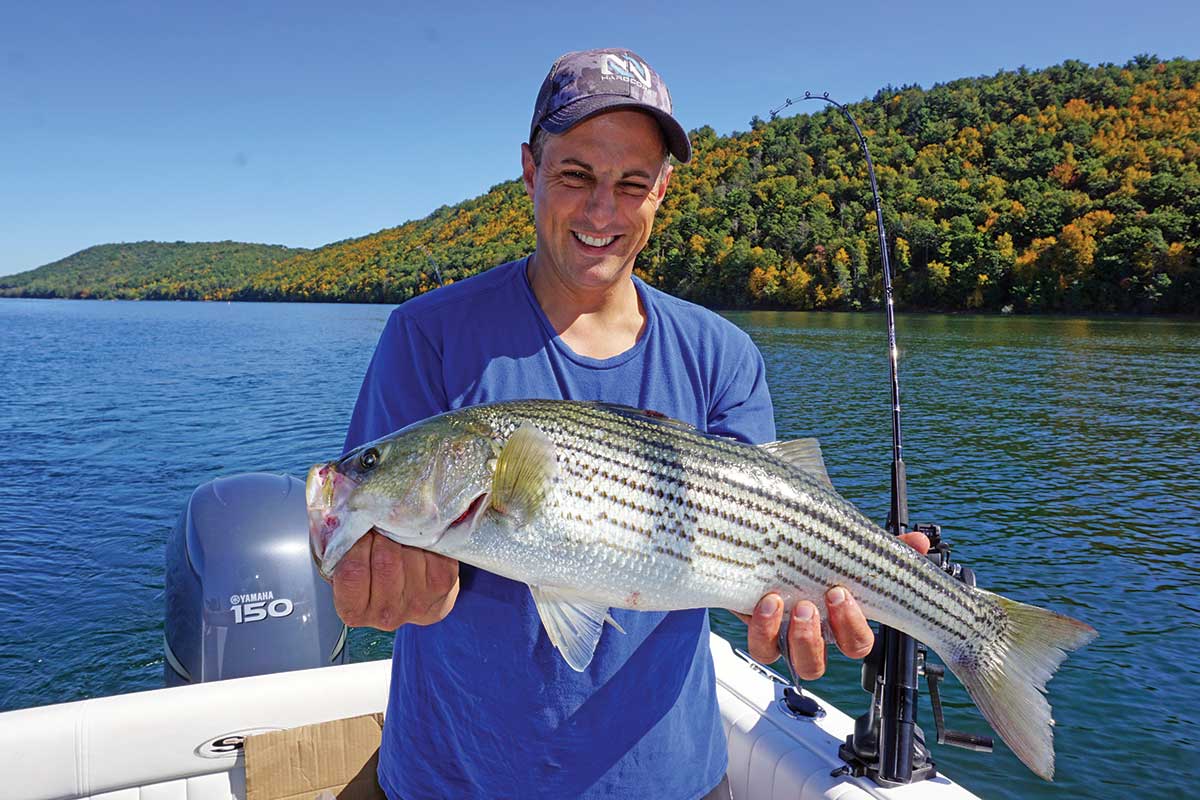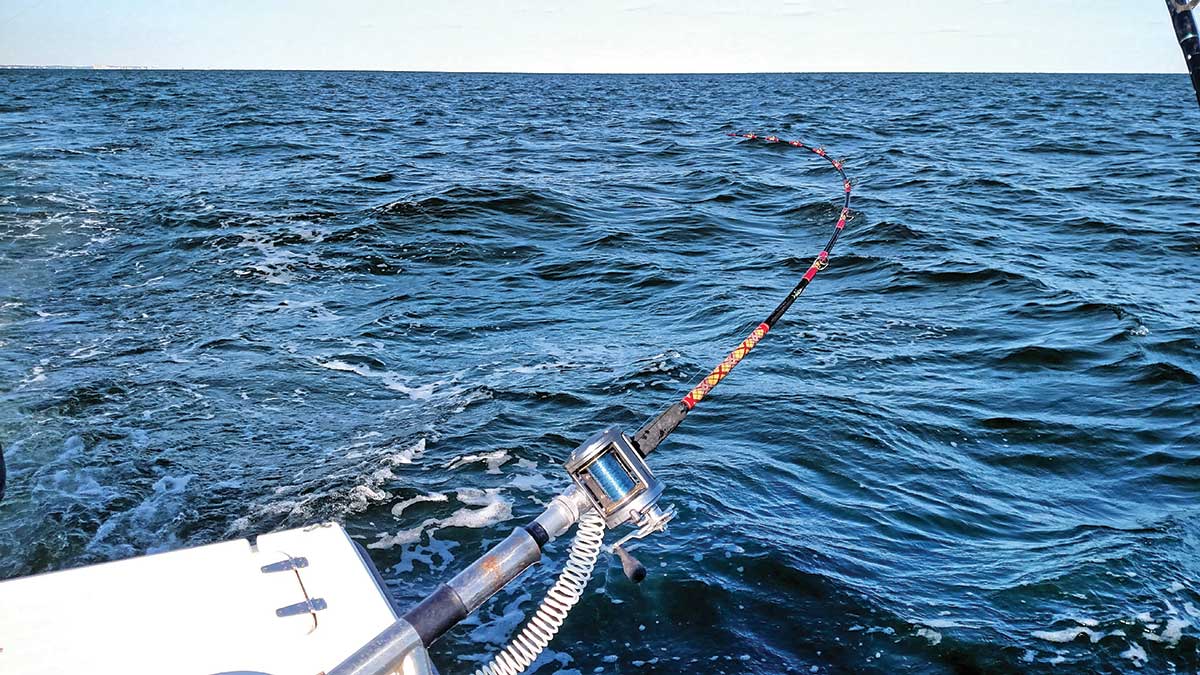
From stop signs to going all in on trophy stripers, the Spoon Man speaks.
If you ever told me that I could catch a trophy striped bass on a piece of a stop sign I would say you were nuts. But that is exactly how Tony Maja tells it when he started experimenting cutting bunker spoons in 1965 at 20 years old.
“We used to go to the junk yard and find old stop signs and cut them down,” Tony said, adding “We even used old Ford headlight rims that we cut with snipes. We had a mold and made 2- to 3-ounce keels and put them on them.”
Tony confirms that at that time bunker spoons were in their infancy and “secrecy” was the name of the game. Homemade crude versions were popping up as early as the 1950s. Much tweaking and experimenting was done. It was well-known New York City charter captain Ronnie Lepper that is recognized as one of the original bunker spoon makers that receives credit for a highly successful design. These spoons were commercially sold as the Lupo Bunker Spoon.
“Lepper was the best and others like Joe Renzo from Jersey, and Freddy Coles were the pros,” Tony noted. “I was up and coming and would speak to them to try to gain as much insight as I could. Other brands I remember such as Montauk spoons, I would go into the hardware store in Staten Island and buy them for $2.75 apiece. There were also Wil-Arm spoons, and Reliable spoons.”
Pump & Sweep
As Tony tells it, what he did with his spoons that made them work so well on striped bass was that he’d cut down the action of the spoon. “Most spoons at the time would pump, pump, with a wide sweep and then dive on about the third sweep,” he said, explaining, “as a result, this wider sweep would snag a lot of bass. So, I would unbend and shape my spoons to reduce the sweep from 6-foot to 3-foot to prevent snagging fish.”
“The other thing I found out was this smaller sweep looked and sounded more like a wounded bunker rather than a swimming bunker and became an easier target for the bass to hit,” he added.
According to Tony, one of the big differences back then when compared to today is that bunker spoons were once only used in the fall when the bait was scattered. “In the spring it was all livelining as we had plenty of bait around. And it was all stainless wire line trolling or leadcore,” Tony said. “I used to mark my own wire with telephone wire. The first 100 feet was green then 150 feet was marked red, 200 feet marked white, and 250 feet marked blue. It was the American flag red-white-blue so it was easy to remember.”

Fast forward to today and we all know the effectiveness of trolling bunker spoons especially for targeting trophy bass in both the spring and the fall. It is true that spoons will work best when the bait is scattered and the bass are in their search mode on the feed. They will draw bass in visually and harmonically.
Many different spoon manufacturers are on the market today besides Maja such as Spoon Fed Lures, Julian’s Montauk bunker spoons, M3Tackle, Reliable, TJ bunker spoons, TGT (Tournament Grade Tackle), and Otter Lures & Tackle spoons, just to name a few. Each has a slightly different shape, size, and hook. Color patterns have also become more and more numerous. But there’s no mistaking the effectiveness of the Maja spoon design with 29 bass over 50 pounds caught in 2019, and 19 caught in 2018. The #4 adult bunker spoons in white, green, or chartreuse are the time proven favorites and one of the best sellers on the market with 10,000 to 12,000 sold annually.
History Lessons
When I wrote and had my first book Fishing the NJ Coast published by Burford Publishing in 2001 I had the extreme pleasure of fishing with the late Joe Nunziato, better known as “Nunz” to most. If you didn’t know him you knew him by his big red boat. Joe was an icon at the Jersey Shore and best known for trolling trophy striped bass on bunker spoons. Joe described himself “as a man that is mystically possessed with a dedicated reverence for striped bass fishing.” Joe graciously revealed to me some of his best-guarded secrets for wire line trolling at the time, many that still stand today.

A few of these were (1) wire will sink at a rate of one foot for every 10 feet of wire in the water; (2) your spoons should track side to side and not spin. A bass will show little interest in a spoon that is spinning. The right action on your spoon will be dictated by your trolling speed. When the desired speed is reached your rods will be pumping at least 100 times every minute. To get this proper action your trolling speed will vary anywhere from 2.5 to 4 plus mph. And finally, (3) when trolling deep in relatively clear water the orb of light around the spoon will be approximately 10 feet in all directions.
I have trolled wire and braid with drails but in the last several years have switched over to trolling leadcore line exclusively with my spoons; in my opinion it out fishes wire or braid. My catches doubled when I started using it. I believe the leadcore gives the spoons more freedom of movement and helps maintain the spoons at the level depth where you want to be.
I use two Shimano Tekota 800 levelwind reels spooled with 400 feet and 350 feet of leadcore with a 25-foot length of 60-pound mono leader. This system is very simple to use as you put the spoon rods in the outrodders and just let all the lead core out until it just disappears into the water and you’re done. This gets my spoons down to 40 and 35 feet respectively. Down the center off the transom I run two tandem 24/6-ounce Maja Magic mojos to complement and complete my spread.

Today, Tony’s son Anthony has taken over the business. “Early in 2019 my dad decided to retire and left me with a flourishing business. I knew I had huge shoes to fill,” Anthony told me. “Our business has always been focused on bunker spoons, mojos and everything that goes with them. To try and diversify our products, I’ve been making more mojos and lighter tackle products that can be used in salt or fresh water because striped bass are all over the country in lakes and rivers.”
Avoid rod pumping a big bass in when hooked on a bunker spoon. Instead a slow steady retrieve with constant tension will work best. Any slack in the line will cause the bass to head shake allowing the spoon to become dislodged. Also keep in mind that since all these big bass you catch on a bunker spoon will need to be released, a quick photo is a must with as little handling as possible. When releasing be sure to submerge the bass’s head below the surface allowing water to flow into the mouth and over the gills.
– J. Freda
“Whether it’s hybrid or landlocked striped bass our products will work,” the younger Maja noted. “Product testing is what we do most. Colors and sizes are always being tested. Nothing comes to market that will not work equally or better than what we already have.”
Oh, and by the way Tony and Anthony’s last name is not Maja. It’s Arcabascio. Tony thought of the Maja name in 1979 when Anthony was born and it became the name of his boat. Maja stands for the immediate family that is Maria mother, Tony (Anthony) father, Jeanine daughter, and Anthony son, nice!
